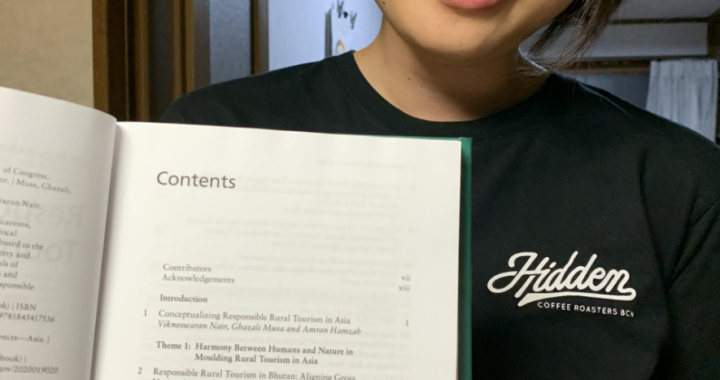The research our staff member, Moe-chan did with Professor Lee Jolliffe when she was in Canada about Japanese Tea and Tourism has been published as one of the chapters in the book, Responsible Rural Tourism in Asia.
She originally came to Obubu as an intern in 2018 during a year off from her university to immerse herself in tea related tourism in Japan as her passion is to bring more people in Japan’s tea villages to be able to get more people appreciate and involved in Japanese tea industry.

A tea related tourism as is defined here is making tea villages to a tourism destination by introducing the charm of that fuses the original taste of the tea and the culture behind it.
At Obubu, we’ve been holding the Guided Tea Tour for international tourists since 2012 which allows people to meet tea famers and learn about Japanese tea from the source alongside a delicious tea tasting. She found our activities as a success case of tea related tourism in Japan when she was researching on the internet and then decided to join us as an intern to learn more about
– How dose Obubu make tea people gather in Wazuka
– What brings people to join this tea tour
– What attracted people the most during the tour etc,
By getting hands-on experiences.

After the internship, she went abroad to Canada to keep following her passion for tea and studied the potential ability of tea tourism in Japan with the professor, Lee jolliffe who is known as an author of the book, Tea and Tourism

Photo: Tea tasting event at the tourism center in Saint John, New Brunswick
It’s been three years after the shot-term abroad in Canada and the research she did with the professor Lee had been published as one of the chapters in the book, Responsible Rural Tourism in Asia.
The chapter was about how to do Rural Tourism responsibly in Japan’s Tea Villages.

In this chapter, they introduced the actual circumstances of tea tourism in Japan’s tea villages and the role of it with 3 case studies, Wazuka(Kyoto), Osawa(Shizuoka), and Higashisongi(Nagasaki).

It’s been over 110 years after the first Japanese tea book in English, the book of tea written by Tenshin Okakura has published. It’s the pleasure for Japanese tea industry that there are more books about Japanese tea from many different aspects has been gradually increased. We believe that it will bring more people to the wonderful world of Japanese Tea!

